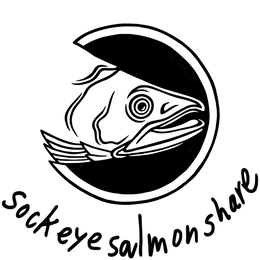PREPARATION
STORAGE
Load frozen fillets into your freezer asap. The colder, the better. Fish will store for 1-2 years, but it is best to eat sooner than later.
THAWING
Remove salmon from freezer and thaw in refrigerator (night before) or on countertop (a few hours before cooking).
Keep plastic wrapping on during thawing. Once fully thawed, cut off plastic wrapping and give the fish a light rinse.
Shake off any excess water and pat dry with a paper towel. Allow to air dry for a few minutes. I tend to cut the salmon fillet crosswise into 5 equally sized pieces. The best piece of fish is at the widest end of the fillet- it tapers off into a thin area- the belly, which has the highest fat content. Others prefer the tail piece, which is thin and lean and tends to cook faster than the rest.
COOKING
Wild Sockeye salmon has a lower fat content than farmed salmon, and so it is easy to overcook. When overcooked, it can be dry. I prefer to cook the fish to a rare state. Cook the fish to the minimum level that you are comfortable with.
Searing- Generally, I always begin cooking with the flesh side down. Then finish cooking on the skin side. Using high heat oil in a hot skillet, sear the flesh side for 1-2 minutes until some crust develops. Flip and sear skin side for 2 minutes or until your desired doneness.
Baking- Coat both flesh and skin side with oil, salt, pepper, your favorite herb and spice. Skin side down on the baking sheet, load into the preheated hot oven at 400 degrees about 7 minutes. Sometimes I finish with broil-level heat, and reduce cooking time accordingly.
Skin- The skin is just as good as the meat- I often skin the fillet and toast or broil it skin-side up with salt until it puffs and develops crispy texture.
